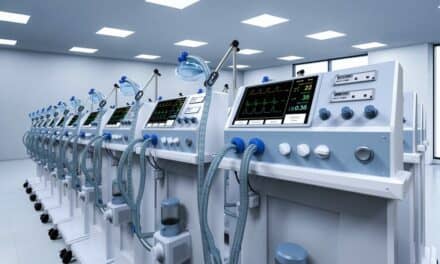Tim Becker, PhD, an associate professor of practice in the Department of Mechanical Engineering at Northern Arizona University (NAU), is developing a polypropylene glycol-based biomaterial called PPODA-QT, which is similar to body tissue, to treat aneurysms in the brain and improve outcomes for stroke and potential stroke patients.
“About 20 years ago, if you had an aneurysm and doctors found out before it burst, you would have to have brain surgery to clip it to keep it from rupturing,” Becker says. “About 15 years ago, surgeons began using tiny catheters inserted inside the blood vessel from the leg to place metal coils into the aneurysm to keep it from growing. The metal devices out there now are better than brain surgery, but they don’t adequately fill the space and allow the blood vessel and aneurysm to heal completely.”
Becker, a medical device engineer, believes PPODA-QT can effectively plug the ballooning aneurysm, enable tissue to regrow over the material and heal the main vessel.
“With so much blood pressure pushing on the weakened blood vessels, blood flow finds a way back in and can still burst. The PPODA-QT material is compatible with the body and can fill that aneurysm space effectively, leaving a smooth surface for healing. It’s a better and more natural option for the body than a wire coil.”
Becker is one of the founders of a medical products company called Aneuvas Technologies Inc. (ATI), which has created a biomaterial device for treating aneurysms. Through a grant from the National Institutes of Health, ATI has granted NAU a subaward of $550,000 over the next two years for Becker’s team in the Bioengineering Devices Lab (BDL) to conduct translational research and help develop new and better versions of the polymer and optimize its use.
“NAU researchers, including engineering, physics and biomedical sciences students, will create new benchtop blood vessel models with properties that are similar to human vessels to test how well biomaterials can stop blood flow and treat the aneurysm,” Becker says. “We’ll also be testing many different aneurysm devices, including coils, and comparing them.”
Becker aims to assess the long-term mechanical stability of PPODA-QT as a method for treating larger aneurysms and develop and assess delivery techniques to insert the material into these aneurysms in an effort to reduce their recurrence rates. “With the currently assembled group of technical, medical and business expertise, FDA approval of an innovative product and its path to commercialization is within reach,” he adds.




